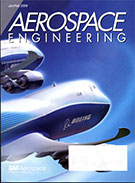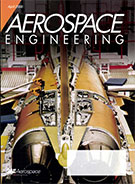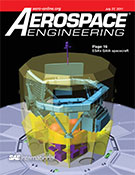Magazine

Aerospace Engineering 2002-08-01
2002-08-01
Europe's double-decker giant "Aerospace Engineering" provides an overview of the issues and technocal challenges faced by Airbus in the development of the A380. Quiet please Several technologies are under development at GE Aircraft Engines that address strigent demands from the airlines for reduced noise emissions from new aircraft engines. Thermal material solutions Astrium has begun investigating several new metallic thermal protection system concepts for reusable launch vehicles. Bringing the best of both worlds in engine technology GE Aircraft Engines and Pratt & Whitney together developed the GP7000, a powerplant alternative for the Airbus A380 superjumbo aircraft.



















